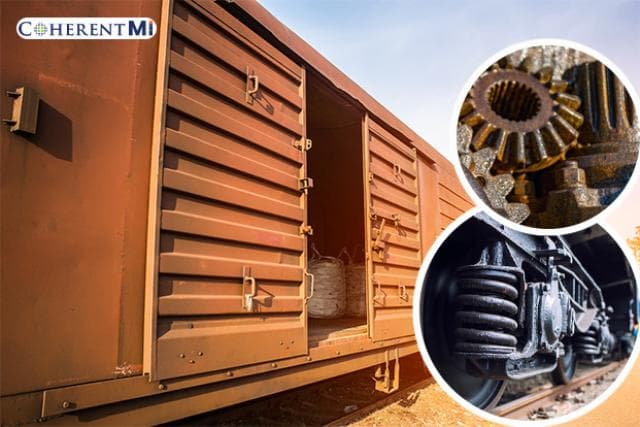The freight rail industry is a crucial part of the North American economy, carrying everything from grain, coal, petroleum products and more. However, freight rail operations would not be possible without well-maintained freight railcar parts that withstand the harsh environments they experience daily. This article discusses some of the core components that make up a freight railcar and how maintaining them is important for safety and efficiency.
Brake Systems
Brakes are arguably one of the most important safety systems on any railcar. Without properly functioning brakes, railcars cannot be controlled which can lead to accidents. The major brake system components include:
- Brake Shoes: Made of composite material, brake shoes are what creates friction to stop the railcar when the brakes are engaged. Regular inspection and replacement of worn brake shoes is necessary.
- Brake Cylinders: Hydraulic or air brake cylinders activate the brake shoes when pressure is applied. Cylinders must remain free of leaks and function correctly.
- Brake Rigging: The levers and linkages that connect the brake cylinders to the brake shoes. Proper adjustment and lubrication of rigging components is important for even brake shoe applications.
- Air Compressors: On railcars using air brakes, compressors keep air lines charged to at least maximum pressure. Compressors need routine maintenance to ensure braking performance.
Without diligently inspecting, testing and maintaining these critical braking components, the risk of brake failures increases - putting the safety of crews and cargo at risk. That is why freight railroads have detailed maintenance programs focused on brake system upkeep.
Couplers and Draft Systems
Couplers are what connect railcars together into consists while in motion. Their draft systems help distribute loads even across multiple railcars. Some important coupler parts include:
- Coupler Assemblies: Made of cast steel, these include the coupler head, pin, lock and release mechanism. They must withstand tremendous buff and draft forces.
- Draft Arms: Connects the coupler to the car's center sill/beam to help evenly distribute buff and draft loads.
- Draft Gear: Acts as an energy absorber between the coupler and car during impacts. Worn or degraded draft gears increase chances of coupler damage.
Proper lubrication and inspection of coupler parts prevents unnecessary wear that could jeopardize railcar connection integrity. Regularly replacing worn draft gears or re-packing them extends their service life. Maintaining coupler systems is therefore very important for safe train handling and operation.
Trucks and Wheel Assemblies
Trucks are what enable railcars to roll along thousands of miles of track. Their wheels make continuous contact with rails transmitting train loads. Key truck and wheel parts include:
- Truck Frames: Provides the structure to mount the wheels, suspensions, brake rigging and more. Subject to impact and corrosion over time.
- Axles: Steel shafts onto which the wheels are mounted. Heat treated for strength and regularly inspected for cracks or damage.
- Wheels: Composite or steel wheels continually bearing train and cargo weights. Wheels need re-profiling or replacement once treads wear below limits.
- Bearings: Support axle rotation and must effectively dissipate heat. Regular greasing extends bearing lifespan in the dirty rail environment.
With freight train tonnages always rising, truck and wheel components endure greater cumulative stresses. Maintaining them to prevent failures like derailments is thus paramount for uninterrupted rail operations and cargo deliveries.
Loading/Unloading Components
Getting cargo efficiently on and off railcars is vital. Common loading parts subject to wear include:
- Rear Door Mechanicals: Hinges, latches, locks and cables/chains that open and secure end doors. Must work reliably in all weather conditions.
- Opening/Closing Systems: Manual, pneumatic or electric actuators used to position doors and other access points. Regular maintenance prevents system failures.
- Support Structures: Supports, ladders and catwalks enable loading/unloading. Corrosion can weaken them jeopardizing worker safety. Proactive maintenance prevents issues.
- Seals & Gaskets: Around doors and other openings to keep cargo dry and contained. Worn seals can compromise cargo and incur cleaning costs prior to next load.
Malfunctioning loading components ultimately inhibit cargo transfer productivity and on-time rail deliveries. Their proper maintenance is important for efficient intermodal operations and supply chains.
Conclusion
Freight rail transport successfully moves millions of tons of cargo annually while being cost-effective and environmentally friendly. However, none of this would be possible without railcars with components that endure continuous wear and weathering during operations. As discussed, diligently maintaining critical parts like brakes, couplers, trucks, wheels and loading systems through scheduled inspections and repairs is necessary for uninterrupted and safe rail transportation. Railroads invest considerable resources into sustaining these core components, keeping the freight rail industry moving America's economy.
